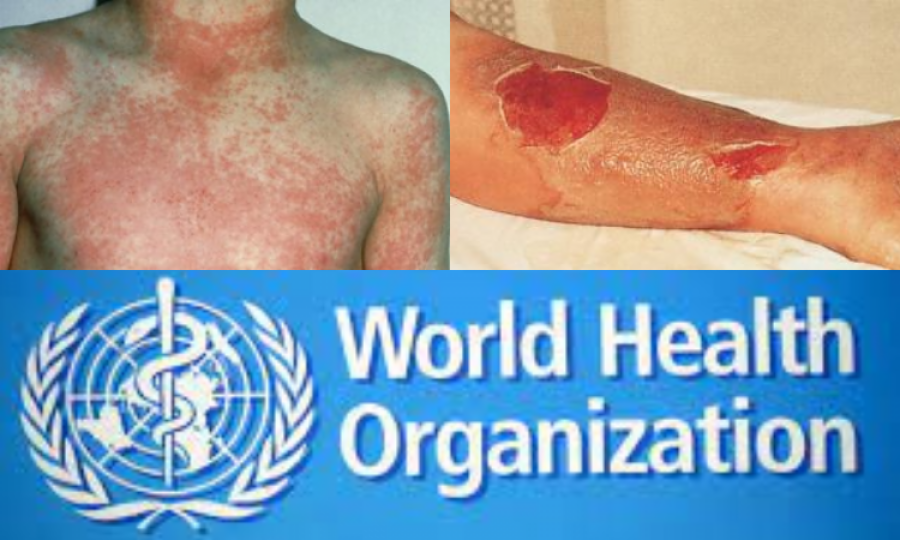Increased incidence of scarlet fever and invasive Group A Streptococcus infection

GENEVA: At least five Member States in the European Region, reported to WHO an increase in cases of invasive group A streptococcus (iGAS) disease and in some cases also scarlet fever. An increase in iGAS-related deaths has also been reported in some of these countries. Children under 10 years of age represent the most affected age group.
Group A Streptococcal (GAS) infection commonly causes mild illnesses such as tonsillitis, pharyngitis, impetigo, cellulitis and scarlet fever. However, in rare instances, GAS infection can lead to invasive iGAS, which can cause life-threatening conditions.
The observed increase may reflect an early start to the GAS infection season coinciding with an increase in the circulation of respiratory viruses and possible viral coinfection which may increase the risk of invasive GAS disease. This is in the context of increased population mixing following a period of reduced circulation of GAS during the COVID-19 pandemic.
In light of the moderate increase in cases of iGAS, GAS endemicity, no new emm gene sequence type identified and no reports of increased antibiotic resistance, WHO assesses that the risk for the general population posed by iGAS infections is low at present.
Epidemiology of Group A Streptococcus
Streptococcus pyogenes, also known as Group A Streptococcus, is a group of Gram-positive bacteria which can be carried in human throats or skin; it is responsible for more than 500 000 deaths annually worldwide.
Transmission occurs by close contact with an infected person and can be passed on through coughs, sneezes, or contact with a wound.
GAS infection commonly causes mild illnesses such as tonsillitis, pharyngitis, impetigo, cellulitis and scarlet fever. GAS infections are easily treated with antibiotics, and a person with a mild illness stops being contagious after 24 hours of treatment.
GAS is considered a common cause of bacterial pharyngitis in school-aged children and may also affect younger children. The incidence of GAS pharyngitis usually peaks during winter months and early spring. WHO risk assessment
WHO currently assesses the risk for the general population posed by the reported increase in iGAS infections in some European countries as low, considering the moderate rise in iGAS cases, GAS endemicity, no newly emerging emm gene sequence types identified, and no observed increases in antibiotic resistance.
WHO advice
The reports of these events do not change the current WHO recommendations on public health measures and surveillance of iGAS.
General recommendations
· WHO recommends continued close analysis of the epidemiological situation in countries throughout the European region, which will be critical to assess ongoing risk and to adjust risk management measures in a timely manner.
· WHO recommends that all countries be vigilant for a similar rise in cases, particularly in light of the ongoing increase in respiratory virus circulation that is now occurring across Europe.
· Given the potential for severe cases, it remains important that GAS-related infections, including scarlet fever, streptococcal toxic shock syndrome, are identified and treated promptly with antibiotics to reduce the risk of potential complications such as iGAS and reduce onward transmission.
· Countries should report any unexpected increased national or regional incidence of iGAS infections to WHO through IHR or equivalent mechanisms either as notifications or consultations, as applicable and driven by the decision-making instrument in Annex 2 of the IHR (2005).
Clinical recommendations
· WHO encourages countries to undertake public health communication activities and messaging to healthcare providers to ensure proper clinical assessment and diagnostic testing of patients with symptoms consistent with GAS infection, and prompt treatment of patients with GAS. In addition, healthcare providers should be reminded that for iGAS infection, early recognition and prompt initiation of specific and supportive therapy for patients can be life-saving.
· Healthcare providers should maintain a high degree of clinical suspicion for GAS infection when assessing patients, particularly those with preceding viral infection (including chickenpox) and those who are close contacts of scarlet fever or iGAS patients. In case of hospital admission, droplet precautions should be implemented. Healthcare workers should always follow standard precautions and perform a risk assessment to evaluate the need for additional precautions.
· Healthcare providers should also be reminded of the increased risk of invasive disease among household contacts of scarlet fever and iGAS cases. Close contacts of these cases should be managed according to national guidance. In addition, adequate hand and respiratory hygiene and adequate indoor ventilation should continue to be emphasized as important protective measures during this winter season.
Laboratory and Surveillance recommendations
· Clusters of cases of iGAS should be reported to local, regional or national health authorities to prompt further investigation.
· In addition, laboratories should be encouraged to submit invasive disease isolates and also non-invasive isolates from suspected clusters or outbreaks to national reference laboratories for further characterization and antibiotic susceptibility testing.
Travel
WHO does not recommend any restrictions on travel and/or trade for any affected countries based on available information about this event.
Trending
Popular
Sindh pledges vigorous action to prevent poliovirus transmission
-
PMA stresses health equity on World ...
04:08 PM, 9 Apr, 2024 -
Dow University’s new rabies vaccine ...
12:18 PM, 28 Mar, 2024 -
IRD role lauded in advancing ...
02:53 PM, 12 Mar, 2024 -
Over one billion people worldwide ...
09:48 AM, 5 Mar, 2024




